If you’re planning an African safari in the not-too-distant future then we’re sure you’ve balked at the prices and been warned of the potential for heaving crowds, both. Indeed, the most popular African safari locations, such as Botswana and South Africa, certainly have a reputation for being on the steeper side.
But it’s neighbouring Namibia where we’re focusing today, which is reasonable, less populated, and generally a superb choice for an affordable African safari holiday. Right now, the Pound is strong against both the Namibian Dollar and South African Rand, which are used simultaneously and interchangeably in the country, and this makes the country a relatively cheap option for travel.
Namibia’s dry season and consequently, the best time to visit, is from roughly May to October, and it’s during this time you’ll see the most wildlife, with the sky clear and visibility high. Temperatures during this time are also more manageable; in fact, it gets pretty chilly at night! Rainy season is a different wildebeest, and sees huge bird migration and plenty of newborns. For visitors, from November to April, the heat and humidity can get unbearable.
Most travellers from London fly to South Africa’s Johannesburg and transit to Windhoek, Namibia’s capital. Alternatively, you can change at Frankfurt; Namibia used to be a German colony and connections between the two countries remain.
Anyway, enough of the need-to-know spiel, you’re here to talk about safari destinations. With that in mind and without further ado, here are 5 must see places on your tour of Namibia, Southwest Africa.
Namib-Naukluft Park
We had to start here, as the vast majority of Namibia holidays do, in Africa’s largest game park and the fourth largest of its kind in the world.
If it’s diversity of landscape you’re after, then in Namib-Naukluft you’ll find some of the most varied, sprawling and magnificent scenery in the world. Indeed, the park boasts a desert, mountain range, lagoon and sand dunes, and is the premier destination in the country for geographic intrigue. A particular highlight is the red dunes of Sossusvlei; rolling, mysterious and spectacular.
Because the terrain is primarily arid and unforgiving, Namib-Naukluft isn’t the best place for wildlife spotting in Namibia. Though plenty of lizards, such as gecko, sidewinder snakes and chameleons, live here, they’re tough to spot. You’ll have more luck spying puku antelope and springbok, but the real appeal of Namib-Naukluft is that dramatic scenery.
Namib-Naukluft Park’s Sesriem entry point (which is close to Sossusvlei) is a four hour drive west from Namibia’s capital, Windhoek. Most tour packages will provide airport pick up, at Hosea Kutako International Airport, in a 4×4, and with required road and entry permits already in place.
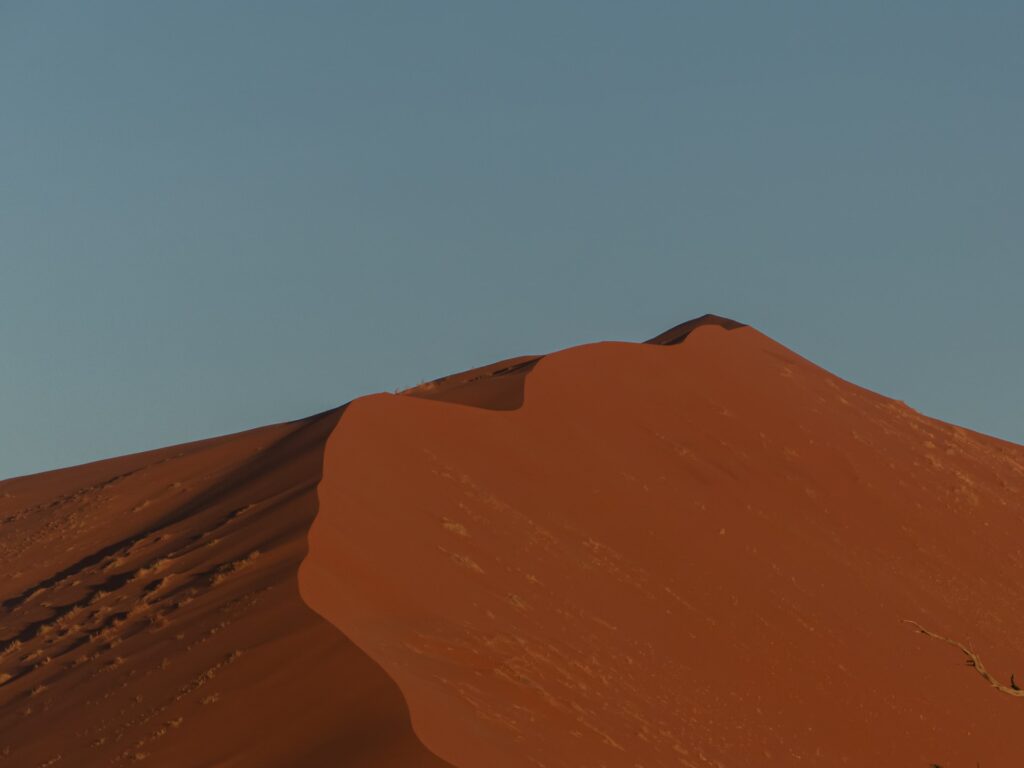
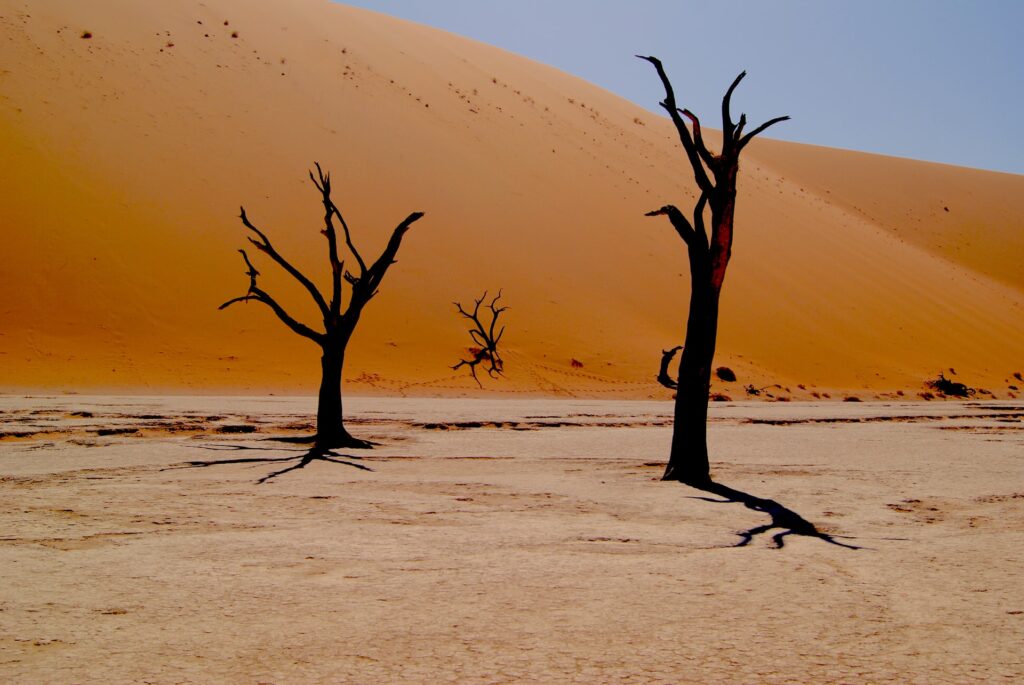
Etosha National Park
You said you were in Namibia to see animals, right? Etosha National Park, in the north of the country, is your place. Regarded as one the continent’s great national parks for sheer diversity of wildlife, it takes its name from the Etosha salt pan, an 80 mile dry lakebed and focal point of the park.
The park is home to the key mammal groups safaris are famous for. Expect to see (if you’re lucky, of course; this is the wild, after all) lions, leopards, elephants, rhinos, giraffes, cheetahs, zebras and so much more throughout the year, primarily in the dry season between May and October.

For big cats, in particular, Kalkheuwel and Chudop are popular spots. For the largest collection of animals in one place, including elephants and zebras, you’ll want to arrange your visit to focus on watering holes, where mammals, birds and reptiles congregate. The Okondeka, Ombika, Nebrowni and Moringa watering holes are highlights.
Perhaps the biggest draw of all is the endangered black rhinoceros, found around the watering holes of Etosha National Park and considered to be the best place in the world to spot them. Because the park is vast, be sure to arrange an excursion with one of the several Namibia tour packages on offer catering to the area, whose expertise gives you a much greater chance of seeing four of the big five who call the national park home.
The drive from Windhoek to Etosha National Park takes around six hours heading north, but views of Namibia are spectacular on the way.
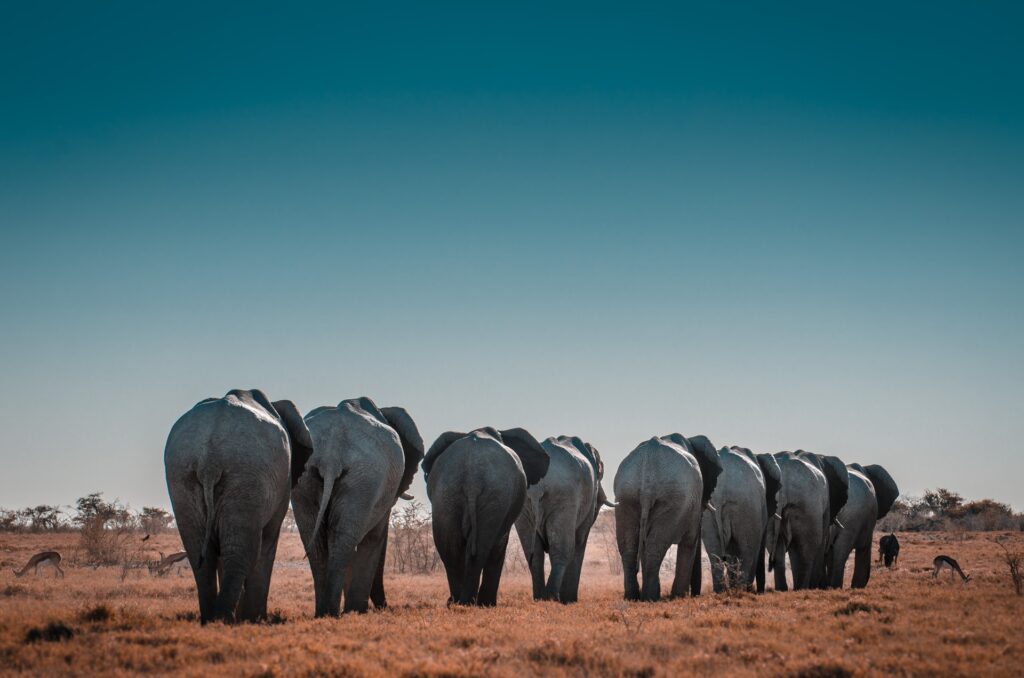
Skeleton Coast National Park
For those seeking a truly unique and hauntingly beautiful experience, Skeleton Coast National Park is an unmissable destination. Located in the north-western part of Namibia, this park stretches along the Atlantic Ocean and is renowned for its eerie shipwrecks, dense fog, and desolate landscapes. The name itself evokes a sense of mystery and adventure, derived from the numerous shipwrecks that litter the coast, remnants of vessels that met their fate in the treacherous waters.
The park is divided into two sections: the southern part, which is accessible to the public, and the northern part, which requires a special permit or guided tour. The southern section offers stunning vistas of the Atlantic Ocean, vast sand dunes, and the chance to see Cape fur seals at Cape Cross Seal Reserve, one of the largest colonies in the world.
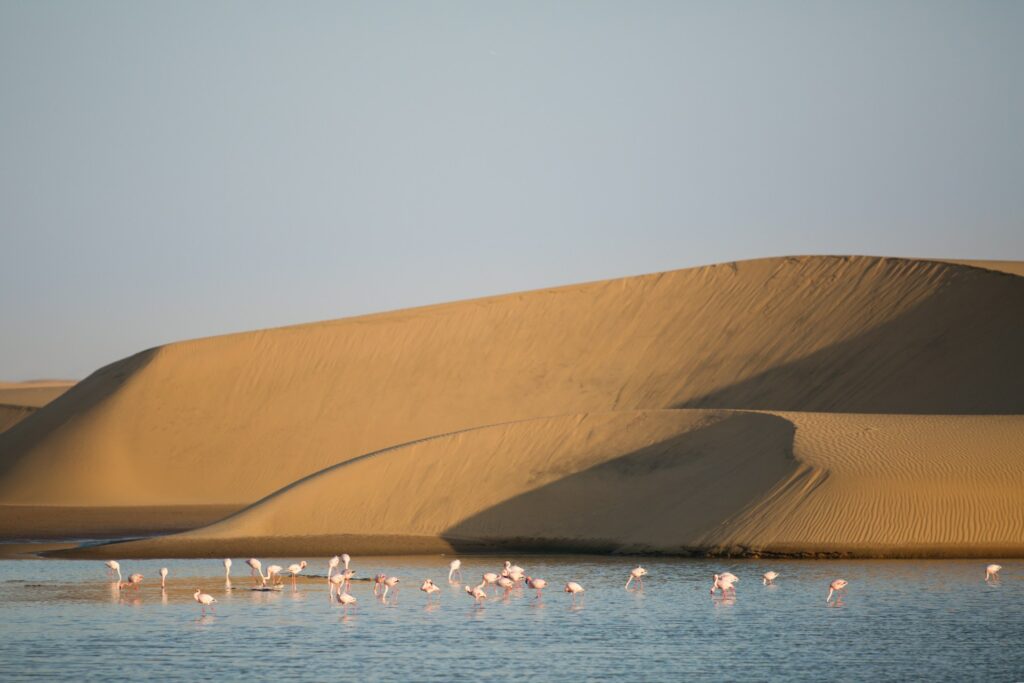
In the northern section, the landscape becomes even more dramatic and remote. Here, you can explore the Hoarusib and Hoanib rivers, which are home to desert-adapted elephants, lions, and other wildlife. The Skeleton Coast is also a birdwatcher’s paradise, with species such as flamingos, pelicans, and cormorants frequently spotted along the shoreline.
A visit to Skeleton Coast National Park is not just about the wildlife; it’s about experiencing one of the most surreal and starkly beautiful places on Earth. The combination of the roaring Atlantic waves, the endless desert, and the ghostly shipwrecks creates an atmosphere that is both haunting and captivating.
To reach Skeleton Coast National Park, most visitors fly into Windhoek and then take a charter flight to one of the airstrips within the park. Alternatively, a self-drive adventure is possible, but be prepared for challenging terrain and ensure you have a well-equipped 4×4 vehicle.
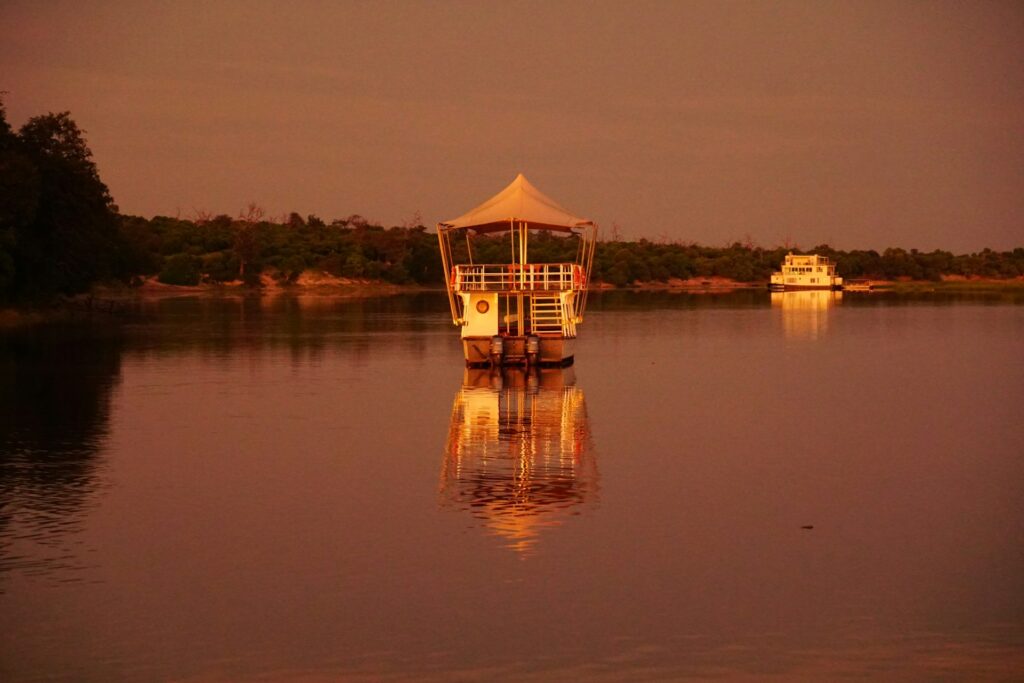
The Zambezi Region (Caprivi Strip)
If it’s untapped and unexplored you’re after, in Namibia’s north eastern pocket is the Caprivi Strip, a sprawling, desolate place, in the best possible way.
Bordered by Botswana, Angola and Zambia, the strip is rich in resources and wildlife equally. 300 miles long but just 20 miles wide, the Caprivi Strip boasts several unfenced safari camps and has only recently gained popularity as a tourist destination. As such, it’s gorgeously untroubled by modern infrastructure and development. Expect to encounter hippos, elephants and lions in groups, enjoying the abundant water.
Largely, visitors are here on a self-drive basis, rather than being chauffeured by a tour, and a visit to the Caprivi Strip represents an adventure, for sure. But that’s what you’re here for right?
The Caprivi Strip is an 11 hour drive northeast from Windhoek, and many travellers choose to break up their trip with a stay in or near Etosha National Park, which is halfway between the two. Alternatively, you – or your tour operator – could organise a chartered flight from Windhoek to Rundu, which is the gateway to Namibia’s North East, and should set you back around £300. The onward drive to the Caprivi Strip takes around four hours.
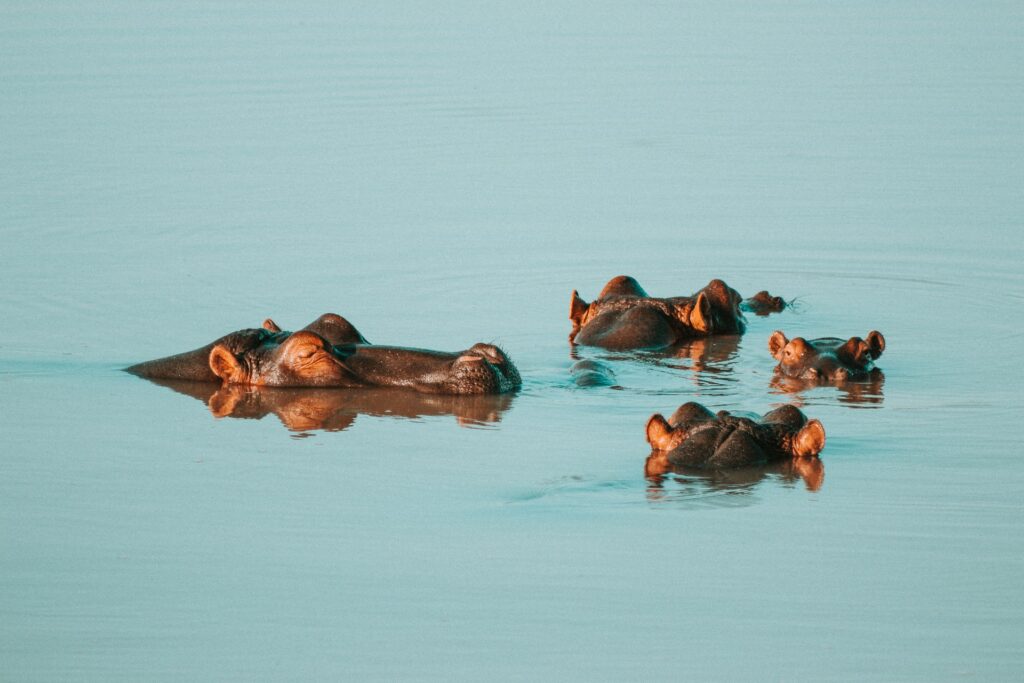
Damaraland
The extremities of Damaraland, in Namibia’s North West, are what will first strike you; barren, scorched desert which sprawls further than the eye can see, the country’s highest mountain Brandberg, and harsh, harsh heat.
Don’t let such inhospitable, ultra-rugged terrain put you off; there’s plenty of wildlife to spot on safari excursions here, with desert elephants and black rhinos the must-see duo. You’ll also have the chance to encounter mountain zebras and giraffes.
The Desert Rhino Camp is the best way to spot the magnificent, endangered black rhinos (and you’ll be contributing to their conservation) but it comes at a cost; more than £500 per person, per night. For something more affordable (although you’re admittedly less guaranteed to engage with the rhinos) many visitors head for the Palmwag area, which has camping and offers excursions to nearby water to spot the mammals.
Another huge draw of Damaraland is the San Bushmen rock art at Twyfelfontein, one of the oldest and most substantial collections of its kind in the world. Just fascinating.
Most visitors book a seat on a charter flight from Windhoek to Damaraland, with Scenic Air or Wilderness Air, which should set you back around £300.
If you still haven’t satisfied your safari curiosity, then on the other side of the continent sits Tanzania, another superb spot for wildlife spotting, and our pick for 2024’s best safari destination. We’ll see you on the savannah?





